Feed Them Well: How School Lunch Reform Can Support Kids and Climate
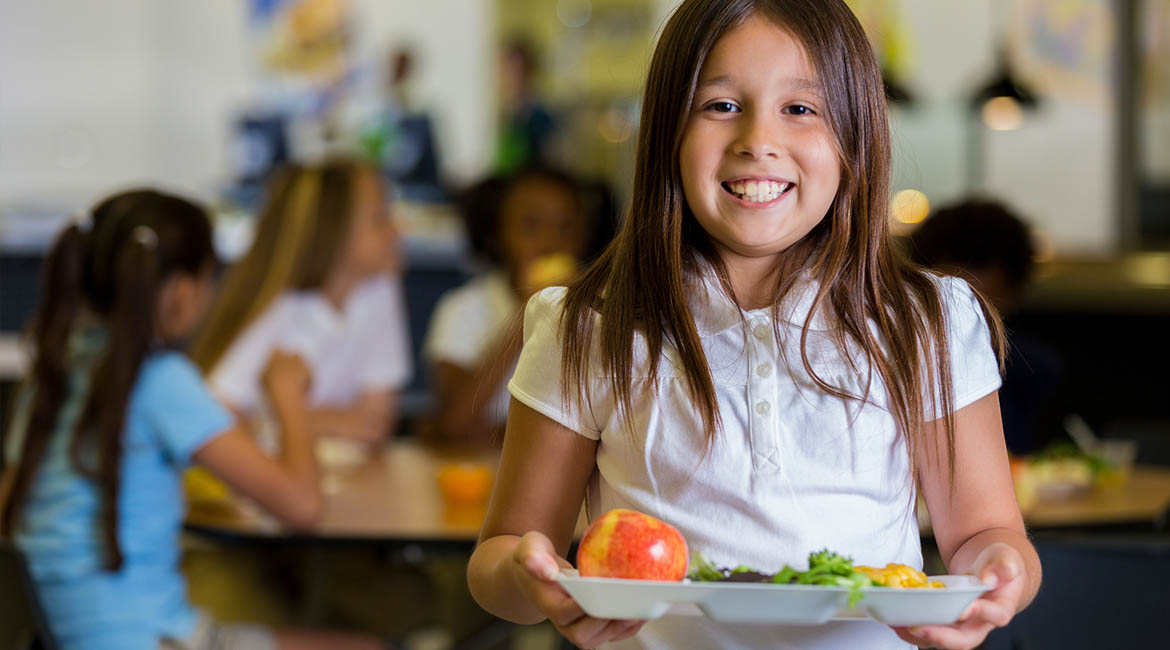
Every year, 30 million kids are served 5 billion school lunches across the U.S., and for many living in food-scarce households, the lunch they’re served in cafeterias is sometimes the only meal they can depend on. That’s one of the reasons why offering nutritious, plant-based foods in K-12 school lunch programs is so critical for health and climate.
But even though many are working to create change, programs like the U.S. Department of Agriculture and the National School Lunch Program push unhealthy, meat- and dairy-heavy meals onto kids’ plates. Now, advocates for healthier food are looking to states like California to lead the way.
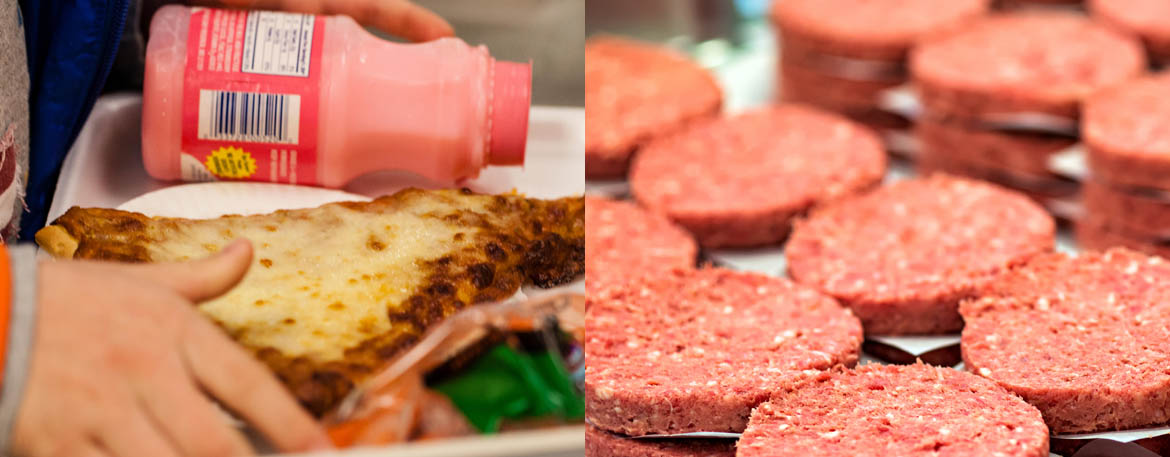
The National School Lunch Program, Explained
The National School Lunch Program is a federal program that provides free or low-cost lunches to children in public and non-profit private schools. More than 30 million children participate each year, and under the program, schools are reimbursed with cash payments for each meal they serve. But to qualify, schools have to meet several requirements — ranging from preparing food in a certified kitchen, to serving a specific amount of protein in every meal, and offering milk to children. In addition to receiving subsidies, participating schools can purchase bulk food items, which are often highly processed, directly from the USDA at a reduced cost — including meat and dairy.
Up until recently, policies that push unhealthy, climate-harming foods into lunch rooms have been the norm, but that’s starting to change. There’s a growing movement to introduce lunch options that are better for health and the environment, and a new wave of legislation to make it happen.
"If every public school in California swapped a veggie burger for a beef burger just once a month, it would save an estimated 300 million pounds of CO2 per year or the equivalent of driving 300 million fewer miles or planting 2 million trees a year..."
Progress in California
In the first half of 2019, California’s State Assembly and Education Committee voted overwhelmingly to advance AB 479, a bill that incentivizes public schools to serve plant-based food and milk options for children. This is groundbreaking: if approved and funded by the State Senate next year, the School Plant-Based Lunch and Beverage Program could make a measurable difference not only in reducing the carbon footprint of the 540 million school lunches served in California each year, but also to improve the health and well being of millions of children.
Video: Many K-12 students rely on school lunch programs, but right now, menus are filled with meat and dairy-heavy processed meals.
“For too long, school lunch budgets have mostly subsidized industrial animal foods and highly processed foods,” says Kari Hamerschlag, deputy director of the food and agriculture program at Friends of the Earth, which supported the bill. “We’d like to see greater support for plant-based foods, which have a smaller carbon footprint and are also better for our health.”
Here are six reasons why national school lunch reform matters — and what you can do to make a difference in your school, district, state and beyond.
 Policies that push meat and dairy are harmful to kids’ health and learning. There are long-term health consequences: One third of children in California are now considered obese, and a meat- and dairy-heavy diet has been linked to numerous preventable health conditions, like diabetes and heart disease. California reflects these national trends, with a recent study finding that more than 70% of California kids are falling short of eating the recommended amount of fruits and vegetables every day.
Policies that push meat and dairy are harmful to kids’ health and learning. There are long-term health consequences: One third of children in California are now considered obese, and a meat- and dairy-heavy diet has been linked to numerous preventable health conditions, like diabetes and heart disease. California reflects these national trends, with a recent study finding that more than 70% of California kids are falling short of eating the recommended amount of fruits and vegetables every day.

The food on kids’ plates has a direct impact on learning. Numerous studies have found that kids with healthy eating habits do better in school. A 2019 study found that consuming fruits and vegetables not only reduces childhood obesity, it also improves school performance and attendance.
 Current school lunch policies promote — and subsidize — environmentally harmful industries. Did you know that animal agriculture contributes 14.5% of the planet’s human-caused emissions, more than all transportation sources combined? Industrial livestock production is also a leading contributor to deforestation, mass extinction, and water pollution. The USDA uses the National School Lunch Program to promote these environmentally harmful industries. Through the USDA Foods program, the government purchases meat and dairy products from farmers and sells them to schools at deeply discounted rates. At the same time, the National School Lunch Program fails to give credit to many plant-based proteins, like seitan and quinoa, to meet requirements. While the federal government had previously started to dismantle some of these outdated policies, in recent years it has reversed course, shoring up policies that use school lunch to protect and promote factory farming.
Current school lunch policies promote — and subsidize — environmentally harmful industries. Did you know that animal agriculture contributes 14.5% of the planet’s human-caused emissions, more than all transportation sources combined? Industrial livestock production is also a leading contributor to deforestation, mass extinction, and water pollution. The USDA uses the National School Lunch Program to promote these environmentally harmful industries. Through the USDA Foods program, the government purchases meat and dairy products from farmers and sells them to schools at deeply discounted rates. At the same time, the National School Lunch Program fails to give credit to many plant-based proteins, like seitan and quinoa, to meet requirements. While the federal government had previously started to dismantle some of these outdated policies, in recent years it has reversed course, shoring up policies that use school lunch to protect and promote factory farming.

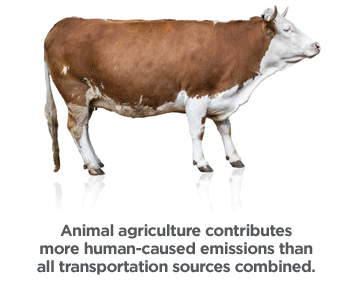
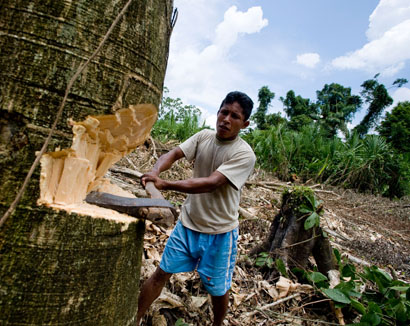
 Current school lunch programs perpetuate racial disparities and health inequity. In addition to causing environmental harm, school lunch programs also reveal a racial health disparity. Even though a majority of Black, Asian and Latino children are lactose intolerant, current policy requires that every child be served milk for schools to be reimbursed for the meal.
Current school lunch programs perpetuate racial disparities and health inequity. In addition to causing environmental harm, school lunch programs also reveal a racial health disparity. Even though a majority of Black, Asian and Latino children are lactose intolerant, current policy requires that every child be served milk for schools to be reimbursed for the meal.
 Every meal is an opportunity to make a positive impact on climate. As institutions that purchase large amounts of food, schools have an enormous amount of influence. Just swapping out one meal for a plant-based protein in a single recipe can improve students’ health and reduce greenhouse gas emissions. For example, swapping Beyond Meat crumbles for ground beef in a pasta sauce eight times per year has reduced Lee County School District’s carbon footprint by 2.3 million pounds of CO2 over just two years, the equivalent of driving 2.6 million miles. If every public school in California swapped a veggie burger for a beef burger just once a month, it would save an estimated 300 million pounds of CO2 per year or the equivalent of driving 300 million fewer miles or planting 2 million trees a year, according to Friends of the Earth.
Every meal is an opportunity to make a positive impact on climate. As institutions that purchase large amounts of food, schools have an enormous amount of influence. Just swapping out one meal for a plant-based protein in a single recipe can improve students’ health and reduce greenhouse gas emissions. For example, swapping Beyond Meat crumbles for ground beef in a pasta sauce eight times per year has reduced Lee County School District’s carbon footprint by 2.3 million pounds of CO2 over just two years, the equivalent of driving 2.6 million miles. If every public school in California swapped a veggie burger for a beef burger just once a month, it would save an estimated 300 million pounds of CO2 per year or the equivalent of driving 300 million fewer miles or planting 2 million trees a year, according to Friends of the Earth.

 Plant-based options are an affordable alternative. It’s true that many school districts load up on cheap subsidized meat and cheese, because the money they receive from the federal government to fund school lunches is so low. At the same time, many schools lack the working kitchens and the food service staff needed to prepare and serve whole-food ingredients, leading them to turn to highly processed — and unhealthy — products they can serve under heat lamps. But the financial barriers to serving plant-based foods are not as great as many school officials may think. “I think there’s a misconception that it will be too expensive,” community nutrition program manager with the Physicians Committee for Responsible Medicine, Maggie Neola says. By purchasing local ingredients and using creative solutions like adding breakfast service, summertime meals, and catering, food service programs can offer healthier options without increasing costs. In fact, a 2017 case study by Friends of the Earth found that the Oakland Unified School District saved $42,000 over two years by serving more plant-based foods, a change that reduced its carbon footprint by 14%.
Plant-based options are an affordable alternative. It’s true that many school districts load up on cheap subsidized meat and cheese, because the money they receive from the federal government to fund school lunches is so low. At the same time, many schools lack the working kitchens and the food service staff needed to prepare and serve whole-food ingredients, leading them to turn to highly processed — and unhealthy — products they can serve under heat lamps. But the financial barriers to serving plant-based foods are not as great as many school officials may think. “I think there’s a misconception that it will be too expensive,” community nutrition program manager with the Physicians Committee for Responsible Medicine, Maggie Neola says. By purchasing local ingredients and using creative solutions like adding breakfast service, summertime meals, and catering, food service programs can offer healthier options without increasing costs. In fact, a 2017 case study by Friends of the Earth found that the Oakland Unified School District saved $42,000 over two years by serving more plant-based foods, a change that reduced its carbon footprint by 14%.
 All politics is local. “State policy has a tendency to move a little bit faster than federal, and it also can pave the way for federal policy to change later,” Neola says. That’s why organizations like PCRM and FOE have focused on policies like AB 479 in California, and a bill moving through the New York Legislature that would require schools to offer plant-based options to students upon request. While state and local laws can’t restrict the National School Lunch Program — for example, by removing meat from menus entirely — they can move the needle. “It can allow for plant-based options to receive better funding, or for those options to be expanded,” Neola says.
All politics is local. “State policy has a tendency to move a little bit faster than federal, and it also can pave the way for federal policy to change later,” Neola says. That’s why organizations like PCRM and FOE have focused on policies like AB 479 in California, and a bill moving through the New York Legislature that would require schools to offer plant-based options to students upon request. While state and local laws can’t restrict the National School Lunch Program — for example, by removing meat from menus entirely — they can move the needle. “It can allow for plant-based options to receive better funding, or for those options to be expanded,” Neola says.
What can you do?
“Taking on national school lunch policies and the USDA may seem intimidating, but even small changes can make a difference,” Neola says.
Parents and community members can start by contacting school officials and food service directors to share information and request more plant-based options in schools, and by contacting or meeting legislators to talk about the need for healthier and more sustainable food lunches — and lawmakers are especially impressed when students contact them directly.

“But often, the most powerful change begins at home,” Neola says. By introducing plant-based foods to kids and serving fruits and vegetables at meals, parents can make kids more likely to eat those foods and even request them in the cafeteria. “If they’re familiar with plant-based foods at home, they’re going to be more comfortable with them and grab them at school,” she says.
OMD has partnered with Friends of the Earth and PCRM to resource advocates with the School Lunch Toolkit for Change containing template letters, tips and more to help support outreach to local Food Service Directors and School District Boards.
What's Next?
Want to do more to support school lunch reform? Check out our School Lunch Toolkit for more ideas.


